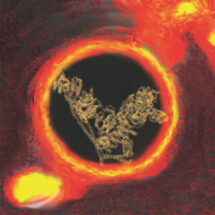 The process of autophagy, in which unnecessary or dysfunctional cellular components are degraded, is important to prevent accumulation of cellular waste and can be triggered by cellular stress. Roger Williams’ group, in the LMB’s PNAC Division, in collaboration with Nicholas Ktistakis at Cambridge’s Babraham Institute and Jan Steyaert at the Brussels VIB Structural Biology Research Center, has determined the first detailed structure of a molecular machine known as the Vps34 complex II, which helps cells adjust to their environment and respond to nutrient stress.
The process of autophagy, in which unnecessary or dysfunctional cellular components are degraded, is important to prevent accumulation of cellular waste and can be triggered by cellular stress. Roger Williams’ group, in the LMB’s PNAC Division, in collaboration with Nicholas Ktistakis at Cambridge’s Babraham Institute and Jan Steyaert at the Brussels VIB Structural Biology Research Center, has determined the first detailed structure of a molecular machine known as the Vps34 complex II, which helps cells adjust to their environment and respond to nutrient stress.
To allow the structure of the protein complex to be determined, the genes were cloned in yeast and crystallised together with an antibody fragment from a llama that was immunised with the Vps34 complex II. This allowed the teams to show that the complex is a Y-shaped assembly of subunits that functions by grabbing cell membranes with both of its arms and producing phosphatidylinositol 3-phosphate landmarks on the membranes. These landmarks guide the vast machinery needed for a cell to digest selected parts of itself, in order to maintain cellular homeostasis. The structure of the Vps34 complex also allows an understanding of a wealth of observations regarding the effects of post-translational modification and mutation on the activity of the Vps34 complex. The work has shown how the activity of the Vps34 complex depends critically on the size and hence shape of membrane vesicles. This can help explain how closely related complexes engage in specific cellular roles at specific locations.
The process of autophagy is important to prevent accumulation of cellular waste associated with ageing and the misfolded, aggregated protein inclusions that are associated with diseases such as ALS, Parkinson’s disease and Alzheimer’s disease. Currently several approaches are being investigated to activate autophagy as a means to treat both ageing and these diseases. However, autophagy is a general stress response that cancer cells use to enable them to survive cancer therapeutics. Consequently, there is also an interest in developing inhibitors of autophagy to make cancer therapeutics more effective. The structure of the Vps34 complex may facilitate new approaches to developing both inhibitors and activators of autophagy.
This work was funded by the MRC, BBSRC, Cambridge Cancer Centre, the Cambridge Overseas Trust and the British Heart Foundation.
Further References
Paper in Science
Roger’s Group Page
Nicholas Ktistakis’ Group
Jan Steyaert’s Group
Babraham Institute News Story